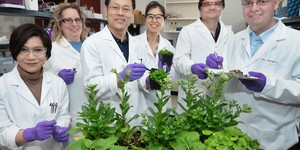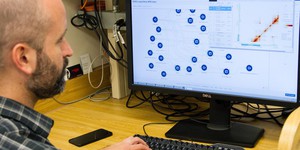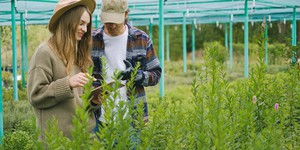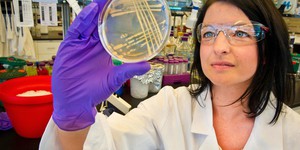Summary
Sandra Slutz, PhD, Science Buddies
If you want a Project Idea with full instructions, please pick one without an asterisk (*) at the end of the title.
Abstract
Can you imagine Valentine's Day or Halloween without chocolate? Well, if you're a chocolate lover brace yourself for the bad news. According to the United States Department of Agriculture (USDA), "Worldwide demand for cacao now exceeds production." If there isn't enough cacao, the major raw ingredient for chocolate, then the chocolate supply will dwindle. Hang on! Before you start rushing to the store to buy all the chocolate you can get your hands on, a solution is already in the works. In 2008, IBM, Mars Inc., and the USDA's Agricultural Research Service, and several other academic partners, joined together to sequence the cacao genome. As articulated in the video below, the goal of the project is to find out which genes need to be altered, through genetic engineering or selective breeding, to create more drought- and pest-resistant Theobroma cacao trees that produce larger quantities of cacao pods.In September 2010, the collaboration finished sequencing 92 percent of the genome. The sequence data was made available to the public through the Cacao Genome Database. Now, scientists throughout the world, including you, can start figuring out how to make healthier, more robust and prolific cacao trees to protect the world's chocolate supply. Researchers will be asking many different types of questions, like which genes control drought tolerance, temperature tolerance, yield, and pathogen resistance. You can ask those same questions! For example, you can evaluate what pathogens might be able to successfully attack the sequenced strain of cacao, Matina 1–6, and which pathogens this cacao plant is immune to. First, you'll need to do some background reading to learn what types of pathogens (fungi, bacteria, and/or viruses) commonly attack cacao.
The Science Buddies guide to Resources for Finding and Accessing Scientific Papers can help you get your literature search started. Once you've focused in on a few key pathogens, comb the literature for known genes in other plants that confer sensitivity or resistance to these pathogens. Using BLAST (Basic Local Alignment Search Tool, which you can read more about in the Bibligoraphy), or other DNA comparison tools, look for homologous genes in the cacao genome. Based on your homolog search, you'll be able to make predictions about whether or not Matina 1–6 is immune to that particular pathogen. You might even be able to confirm your findings using phenotypic data published about Matina 1–6. With some genetic interference and a little bit of luck, you might never need to face a chocolateless holiday!
Bibliography
Here are a few websites that will help you with this project:
- NCBI. (n.d.). BLAST. Retrieved October 22, 2010.
- Madden, T. (2003, August 13). The BLAST Sequence Analysis Tool. Retrieved October 22, 2010.
- Cacao Genome Database Contributors. (n.d.). Cacao Genome Database. Retrieved October 22, 2010.
- IBMLabs. (2008, June 24). IBM, MARS, USDA-ARS to Jointly Study the Cocoa Genome. Retrieved October 22, 2010.
Ask an Expert
Global Connections
The United Nations Sustainable Development Goals (UNSDGs) are a blueprint to achieve a better and more sustainable future for all.
Careers
If you like this project, you might enjoy exploring these related careers:
Related Links
- Science Fair Project Guide
- Other Ideas Like This
- Genetics & Genomics Project Ideas
- Agricultural Technology Project Ideas
- Genetic Engineering Project Ideas
- My Favorites












